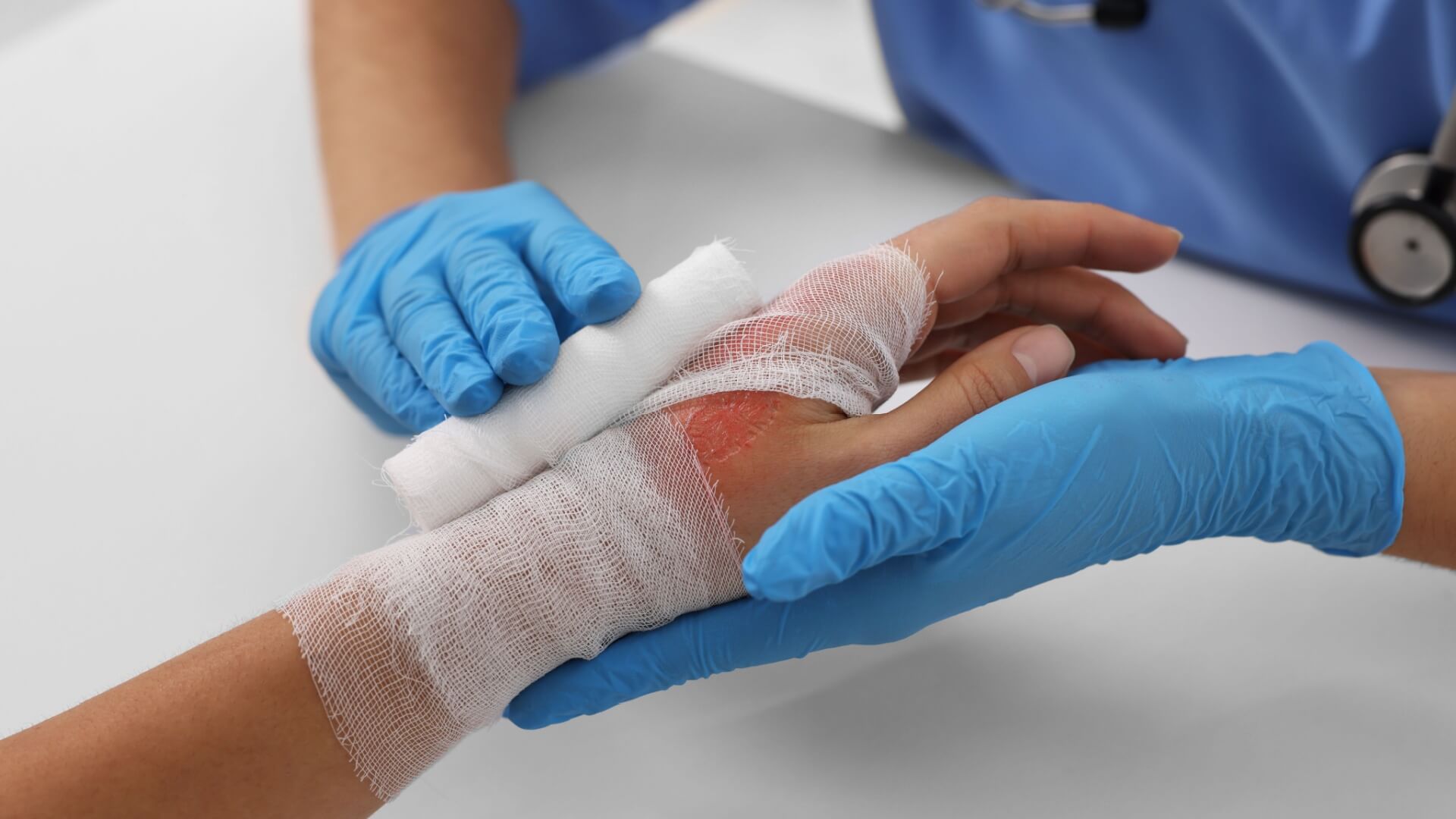May 1, 2025
Understanding the Journey: From Wound to Scar
That fresh cut, surgical incision, or burn mark isn’t just a cosmetic concern — it’s your body’s healing masterpiece in progress. Every scar tells a story of your body’s remarkable ability to repair itself, even if the ending isn’t exactly what you hoped for.
Here’s the good news: proper care at each healing stage dramatically influences your scar’s final appearance and function. With the right approach, many scars become barely noticeable over time. For those managing their healing journey, it provides a roadmap through what can feel like a lengthy process.
Understanding these stages helps set realistic expectations and improve outcomes. The visible changes in your scar — from angry red to eventual fading — reflect sophisticated cellular work happening beneath the surface. The innovative devices from Gladiator Therapeutics can help improve the healing of your scars significantly.
The 4 Stages of Healing Scar Tissue
When your skin gets injured, your body doesn’t waste a second before launching its natural repair crew. This fascinating process unfolds in four distinct yet overlapping stages, each with its own special timeline and cellular activities. Understanding these stages of healing scar tissue helps you know what to expect and how to care for your wound properly.
After about 3 months, most wounds are mostly repaired, but the new skin is only about 80% as strong as your original skin. Complete scar maturation can take up to 2 years, during which you’ll notice your scar changing in appearance and texture.
1. Hemostasis
The moment your skin breaks open, hemostasis springs into action. Think of it as your body’s emergency response team rushing to the scene of an accident.
Within seconds to minutes, your blood vessels tighten up to reduce blood flow, while platelets huddle together, forming a plug at the wound site. Around this plug, a fibrin “net” forms, creating what we call a blood clot – the foundation for the protective scab that will soon appear.
This fibrin net acts like nature’s band-aid, holding everything in place while your body gathers its next wave of healing resources.
2. Inflammation
If hemostasis is the emergency response, inflammation is the cleanup crew. This phase typically begins within hours of injury and usually lasts up to 4 days, though larger wounds might stay inflamed longer.
During inflammation, your blood vessels dilate, increasing blood flow to the area. White blood cells, especially neutrophils and macrophages, flood the wound site like tiny vacuum cleaners, destroying bacteria and removing debris. This is why your wound becomes red, warm, swollen, and often painful – all good signs that healing is progressing normally.
Your wound might produce clear fluid called exudate during this time – that’s normal. However, excessive drainage or cloudy, smelly discharge could signal infection. The inflammation phase requires balance – too little inflammation might lead to poor healing, while too much can delay recovery and potentially contribute to abnormal scarring.
3. Proliferation
Now comes the rebuilding phase. Starting around day 4 and lasting up to 21 days, proliferation overlaps with both inflammation and early maturation.
During this time, specialized cells called fibroblasts migrate to your wound and produce collagen (primarily type III at this stage) and other proteins. New blood vessels form in a process called angiogenesis, bringing oxygen and nutrients to fuel the repair work.
Pink, bumpy granulation tissue develops as a scaffold, while epithelial cells from the wound edges begin moving across the wound surface like a living bandage. Meanwhile, the wound contracts, gradually pulling the edges closer together.
The granulation tissue appears granular under a microscope (hence the name) and contains many blood vessels, giving it that characteristic red or pink appearance. This tissue is delicate and bleeds easily if disturbed, which is why gentle wound care is so important during this time.
4. Maturation — Final Stage of Healing Scar Strength
During maturation, your body replaces the weaker type III collagen with stronger type I collagen. The collagen fibers reorganize and align along tension lines, while cross-links form between them, increasing your scar’s strength. Unnecessary cells undergo programmed cell death (apoptosis), and your scar gradually flattens and fades from red to pink to white or slightly lighter than the surrounding skin. Blood vessels decrease, which is why the redness fades over time.
Even when fully mature, your scar will reach approximately 80% of your original tissue’s strength. This explains why even well-healed scars remain somewhat vulnerable to re-injury.
Interestingly, in older patients or areas where skin is more relaxed, scars tend to settle more rapidly. In younger patients or areas where skin is tighter, it might take the full 18 months to 2 years before the scar is completely mature.
According to scientific research on wound phases, each of these stages plays a critical role in creating the strongest possible repair. While we can’t eliminate scars, understanding this remarkable process helps us appreciate our body’s healing abilities and take steps to support each phase properly.
Contact Gladiator Therapeutics For More Information About Our Wound Healing Devices
At Gladiator Therapeutics, we’re passionate about supporting this natural healing process. Our non-powered far infrared technology with SemiCera® Technology works alongside your body’s own healing mechanisms, potentially helping you recover faster with better results.
While we can’t eliminate scars, our devices can significantly influence how they look and feel with the right care at the right time. Understanding what’s happening beneath the surface helps you make informed decisions about your healing journey. Contact us today to learn more.
- Tags:
- stages of healing

